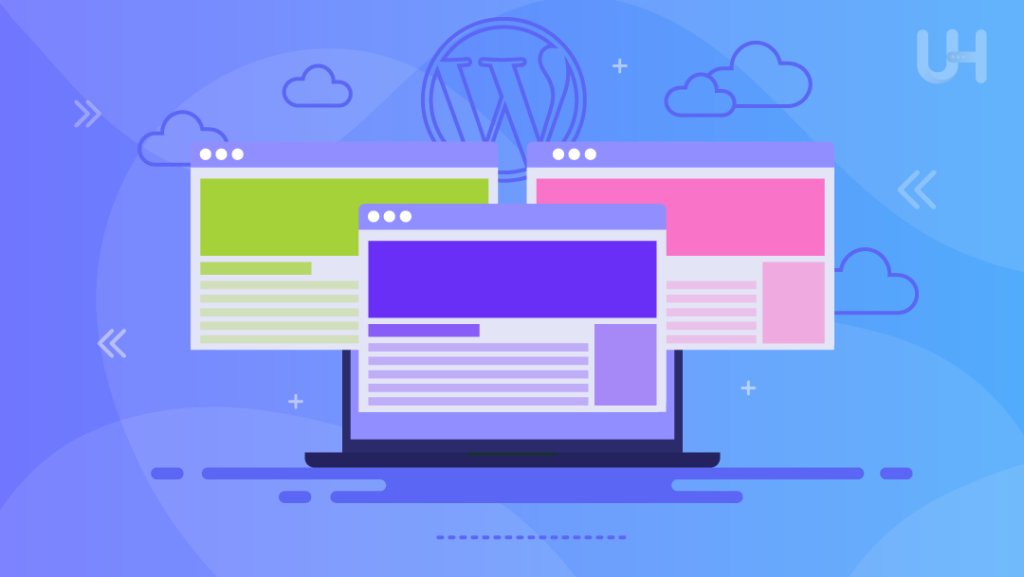A landing page is a pivotal tool in the realm of online marketing campaigns. Yet, crafting it demands substantial effort. Creating a landing page isn’t a walk in the park, even with WordPress, often hailed as the most user-friendly CMS. However, the primary challenges don’t always stem from the technical realm; they reside in strategy and your approach to the landing page.
If you disregard strategic planning when creating a landing page, the outcomes could range from a meager few conversions to a complete absence of any. That’s why, instead of delivering a standard guide on building a landing page, I’ve opted to share several pointers on effectively and seamlessly boosting the conversion rate on your designated page.
However, before I move on to the main tips, I’ll emphasize a point that might seem obvious to many but not to everyone. To create a landing page, you shouldn’t use shared hosting. You should place your landing page on KVM VPS Hosting. This virtual hosting allows you to further divide a server into multiple virtual servers, each capable of hosting a different website. It can be a landing page, a blog, or even an ecommerce store.
Optimizing for Mobile Devices
A comprehensive marketing campaign blueprint holds paramount importance. As you embark on the creation of a landing page, a multitude of factors need consideration. Among them is the array of devices your clientele will employ.
If you channel your ads through platforms like Facebook or Google, it’s reasonable to assume that a substantial proportion of users will access your page via mobile devices. That is unless you’ve configured your ads differently. Nearly half of internet users admit to conducting online purchases via smartphones.
Regrettably, a common error is crafting an exquisitely designed desktop landing page while completely overlooking its mobile counterpart. Thus, if you expect a significant portion of your campaign’s traffic from mobile devices, prioritize the mobile rendition and implement modifications there before all else.
Moreover, put in the effort to reduce the loading time of your WordPress site; prolonged loading periods needlessly escalate the bounce rate. Users who’ve had unfavorable encounters with a brand’s mobile WordPress site previously are more than 60% less inclined to make purchases of its offerings.
You can achieve swift loading of the site through two avenues. The initial approach entails placing your target page on fast WordPress hosting. The second method involves optimizing your site.
However, don’t rush into employing caching plugins right away. Instead, embark on genuine website optimization and consider plugins merely as a supplementary component to your optimization endeavors.
Assure User-Friendliness by Designing Lucid Structures
Few aspects frustrate visitors as much as arriving on a target page and being unable to locate the information they’re seeking within mere seconds. Typically, those who explore your website scan its content initially for the specific details they desire. Subsequently, they decide whether to linger on the target page or exit.
Consequently, when you are creating a landing page, aim for the most straightforward structure possible for your target page. Utilize visual cues to present CTAs engagingly and allocate unique background tones to various topics. Dodge protracted textual passages and intricate imagery and formulate appropriate headers presented in an eye-catching style.
This approach will facilitate swift scanning and counteract a steep bounce rate.
Mindful Content – Less is More
Alongside a well-organized structure, showcase your content in the most engaging manner possible. Less is actually more. The temptation to include every bit of information about your product on the landing page is strong. However, you must resist this urge, as such an approach won’t yield effective results.
Customers swiftly scan through your content in search of their desired information. Lengthy blocks of text will dissuade them from diving into the page’s content. It is pronounced on mobile devices, where the screen real estate is limited and unsuited for extensive text.

A clever tactic of creating a landing page involves concealing lengthy textual sections by placing them within an accordion, revealing solely the headers. The interested reader can expand them. Remember, you can’t coerce someone to read text; your best option is to lure them in. Therefore, it’s more advisable to package the information in an attractive visual format (such as an infographic) to add vibrancy to the minimalistic design.
Where to Host Your Landing Page?
If you’re creating your landing page on WordPress, you need specialized hosting. It should combine the benefits of WordPress hosting and VPS server. Luckily for you, UltaHost has prepared exactly such an offer! Check it out now!
A Clear Message for Your Users
Recall the time I brought up how meticulous campaign planning is pivotal in crafting a landing page. Here’s further proof: the design and essence of your landing page depend on the specific audience you’re targeting with your target page. Speaking in business terms: it rests on the sales funnel stage where you’ll direct the prospective customer to the landing page.
If it’s a Google ad, a YouTube ad, or any other advertising network, there’s a chance that the potential customer isn’t familiar with your offer yet. It will put you in the position of convincing this individual about your offer within a mere few seconds. Conversely, it might be a landing page geared toward your subscribers – in that instance, you can simplify certain aspects.
Regardless of the scenario, employ a lucid message and frame compelling headers that will swiftly grant users an understanding of what you’re extending and the advantages that come along. Steer clear of technical jargon (unless it’s a landing page aimed at a niche group of experts), employ straightforward sentence structures, and endeavor to render your offer as tangible as possible.
Long rosters of features tend to work counterproductively, as they diffuse the sales pitch. Presenting the six crucial merits of the product outweighs enumerating twenty features by far. This way, customers will comprehend your proposal with greater clarity. Enumerate solutions that aid them in addressing their core issues. Remember, a landing page isn’t a product specification.
Avoid Distractions
When you’re in the process of creating of a landing page, striking the right balance is crucial. You certainly don’t want your target audience getting disinterested in your content, but at the same time, you don’t want to inundate them with an overwhelming number of features. So, steer clear of flashy graphics, an overly vibrant color palette, links that lead users astray from the page, and other distractions like slow hosting server.
To avoid problems with your hosting, choose fast VPS.
There’s a solitary spot where you should make a bold visual statement: the Call to Action (CTA). It represents the most crucial section of your page and should be easily recognizable. You must employ every sensible tactic to capture the user’s attention and direct it towards the CTA.
Employ colors adeptly to guide users toward their objectives and motivate them to purchase. Dodge any elements that might divert their attention and hinder conversions on your landing page.
Integrate Elements that Foster Trust
You need to establish trust if users are unfamiliar with your company or offer. Up to 65% of customers scout for online reviews before purchasing. Spare users the trek to review websites by infusing trust-building elements onto the landing page. Showcase customer testimonials, star ratings, and reviews, or display accolades and quality insignias.
Also, ensure security for your users. And it’s not just about securing the site with an SSL certificate, but primarily about hosting it on Secure WordPress Hosting. This way, you’ll protect your landing page from all the threats lurking on the internet, and the customer will be able to safely provide their information.
By doing so, your target audience will promptly perceive that they can place faith in your company and that your offer holds credibility, having persuaded others.
Evoking Authentic Emotions
Chances are, you’ve encountered a landing page or two that features a high-resolution image of nature accompanied by a quote from a well-known figure. You might have wondered: What’s going on here? Some companies make the error of prioritizing aesthetics at the expense of authenticity and emotional resonance when creating a landing page.
Authentic appearance is paramount, and forging an emotional connection can be a substantial driver in ramping up conversions. Landing pages centered around evoking emotions can yield an uptick of as much as 80% in conversion rates.
You don’t require images of the highest resolution to sway your target audience. What truly counts is how you present yourself and your company, striking a balance between personal and professional. Users should be familiar with the faces behind the brand.
Leverage photographs of your employees and contract personnel, and give them an introduction too. In doing so, users who land on your landing page will already have formed a subtle emotional tie. This heightened connection makes them more predisposed to purchasing or utilizing your service.
Maintaining a Cohesive Style

When developing a landing page, it needs to mirror the look and feel of the ad, while remaining in sync with your brand’s overarching communication guidelines. If your landing page diverges significantly from the ad’s appearance, it will create a disjointed experience, leaving users uncertain if it’s the same provider.
Hence, when creating a landing page, utilize the same graphics and phrasing that have already demonstrated their efficacy – considering that the user clicked on the ad and progressed to the landing page. Depend on this consistent style to ensure a smooth segue to the newsletter, your store, or the payment gateway.
Incorporate at Least Two Distinct CTAs
Even if your product or service holds considerable merit, it’s wise to initially present your users with a low-commitment proposition and instill motivation. Individuals navigating your website often remain unacquainted with your offering or company.
Once your target audience is acquainted with both you and your offer, articulate a clear call to action. Employ incentives such as minor giveaways, discounts, or a gratis trial period. However, the CTA must be straightforward and lucid. Moreover, it should be visible to those who are merely scanning the landing page briefly.
The initial CTA should come into play after emphasizing the crucial benefits of your offer. It constitutes the initial juncture at which we can proffer an action to the customer. The subsequent CTA should find its place further down the landing page, yet not precisely at the end. The majority of users don’t pursue to the very bottom.
An effective CTA must unambiguously convey what you’re extending, enumerate the benefits the customer stands to reap, and outline the steps they need to take to avail themselves of your offer.
Conclusion
A landing page is an ongoing endeavor. Even once you’ve designed and set it in motion, you’ll need to consistently tend to its optimization. There’s perpetually space for enhancement. During this optimization phase, it’s of paramount importance not to overhaul numerous aspects simultaneously.
Hence, begin by testing diverse headlines, followed by varied texts or graphics, and subsequently, differing structures. This systematic approach allows you to distinctly discern which element amplified (or lessened) your conversion rate, instilling a sense of proximity to an ideal landing page.
Along with an effective landing page, there must be an effective, secure, and always accessible website. You need to build it on a properly secured and reliable server. Get top-notch security of DDoS Protected VPS with 24/7 support. Our powered on SSD NVMe disks infrastructure focuses on auto-scaling, performance, and security. Let us show you the difference! Check out our plans!










